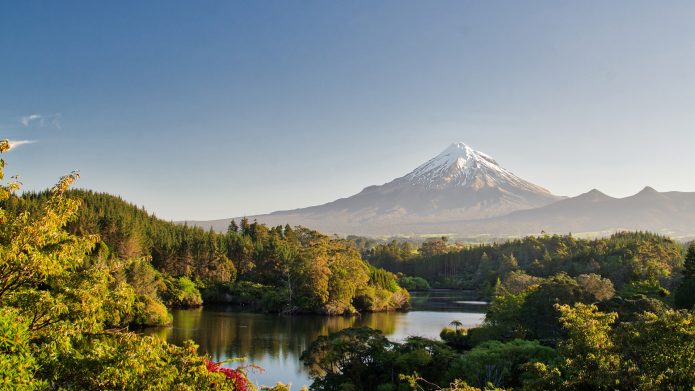PHOTO: REINZ
Median house prices across New Zealand increased by 6.4% in April to a record equal $585,000, up from $550,000 in April 2018. Median price increases for New Zealand excluding Auckland were even stronger, increasing by 7.6% to a record $495,000 up from $460,000 in April last year, according to the latest data from the Real Estate Institute of New Zealand (REINZ), source of the most complete and accurate real estate data in New Zealand.
Median house prices in Auckland remained exactly the same as April 2018 at $850,000.
There were three regions that achieved record median prices in April and one region had an equal record:
- Southland: +22.4% to $300,000 (up from $245,000 at the same time last year)
- Manawatu/Wanganui: +18.0% to $360,000 (up from $305,000 at the same time last year)
- Northland: +12.7% to $507,000 (up from $450,000 at the same time last year)
- Waikato: +9.3% to a record equal $550,000 (up from $503,000 at the same time last year).
Bindi Norwell, Chief Executive at REINZ says: “Prices across New Zealand have continued to rise with 13 out of 16 regions experiencing annual price increases. Record median prices were recorded in Southland, Manawatu/Wanganui and Northland. Additionally, we’ve seen some strong areas of growth outside of those records including the West Coast with a 16.3% increase year-on-year.
“Surprisingly, Nelson and Otago both saw falls in the annual median price down 0.9% and 0.4% respectively. Given the strength of these markets over the last few months, these were relatively small declines in the bigger scheme of things, perhaps suggesting that these are just the early signs of the usual winter slow down,” continues Norwell.
“Despite the growth in many of the regions, Auckland seems to be in a ‘Groundhog Day’ situation with the median price for the region being around the $850,000 mark for three years. It will be interesting to see if last week’s OCR cut as well as certainty on CGT will impact the market in the coming months,” continues Norwell.
Number of houses sold lower than same time last year
The number of residential properties sold in April fell by -11.5% from the same time last year to 5,800 (down from 6,555) the lowest sales volumes for the month of April in 5 years.
For New Zealand excluding Auckland, the number of properties sold fell by -9.5% when compared to the same time last year (from 4,634 to 4,192).
In Auckland, the number of properties sold in April fell by -16.3% year-on-year (from 1,921 to 1,608) – the lowest for the month of April in 11 years.
Regions outside of Auckland with the greatest decrease in annual sales volumes during April were:
- Bay of Plenty: -25.5% (from 502 to 374 – 128 fewer houses) – the lowest for the month of April for 5 years
- Nelson: -16.7% (from 96 to 80 – 16 fewer houses)
- Marlborough: -14.0% (from 86 to 74 – 12 fewer houses)
- Southland: -14.0% (from 164 to 141 – 23 fewer houses).
Three regions saw an annual increase in sales volumes during April:
- Gisborne: +9.7% (from 62 to 68 – 6 more houses sold)
- Hawke’s Bay: +5.4% (from 221 to 233 – 12 more houses sold)
- West Coast: +2.7% (from 37 to 38 – 1 more house).
“Despite prices rising in a number of centres around New Zealand, the number of properties sold across the country was lower than the same time last year – it’s the lowest sales volumes for the month of April in 5 years. However, given new listings have been down across the country for five of the last six months now, it’s not entirely surprising that volumes were down. Especially when you take into account that school holidays, Easter and ANZAC Day all fell over the same two-week window.
“With sales volumes down in 13 out of 16 regions we’re still hearing anecdotes from real estate agents around the country that vendors need to really understand the market they’re selling in and understand the gap between what they want to achieve for their property and what buyers are willing to pay. While median prices might be strong in a region, this doesn’t mean that all properties are going to be at that level, so some research into comparable properties selling in your neighbourhood goes a long way,” she continues.
REINZ House Price Index (HPI) increases 1.3% annually
The REINZ House Price Index for New Zealand, which measures the changing value of property in the market, increased 1.3% year-on-year to 2,741.
The HPI for New Zealand excluding Auckland increased 6.7% from April 2018 to 2,715. The Auckland HPI decreased -4.4% year-on-year to 2,772 the lowest level in 3 years.
“This may be due to the fact that we’ve seen some cooling in the past few months across some areas of Auckland,” concludes Norwell.
In April, the Manawatu/Wanganui region had the highest annual growth rate, a 17.1% increase to a new record high of 3,038 – the first region to go over the 3,000 mark, followed by Southland in second place with an annual growth rate of 15.5% to 2,882 and in third place was Gisborne/Hawke’s Bay with an 11.2% annual increase to 2,720.
Wellington also experienced a record high index level of 2727, up 9.6% from the same time last year.
Whilst the REINZ HPI saw 11 out of 12 regions experience an annual increase in their index level, looking at the monthly figures paints quite a different picture with 10 regions showing negative results. The last time this happened was December 2010.
Days to Sell increases marginally
In April the median number of days to sell a property nationally increased by 1 day from 36 to 37 when compared to April last year. For New Zealand excluding Auckland, the median days to sell also increased by 1 day from 35 to 36.
Auckland saw the median number of days to sell a property increase by 4 days from 37 to 41 when compared to the same time last year.
For 3 months in a row Manawatu/Wanganui has the lowest days to sell of all regions at 28 days, down 5 days from 33 at the same time last year. The West Coast again had the highest days to sell of any region at 87, an increase of 15 days since April 2018, and a rise of 31 days since March.
Auctions
Auctions were used in 11.1% of all sales across the country in April, with 641 properties selling under the hammer – this is down from the same time last year, when 13.2% of properties (864) were sold via auction. This is the lowest level of auctions for the month of April since April 2010.
Gisborne again had the highest percentage of sales by auction across the country with 58.8% (or 40 properties) in the region sold under the hammer – down from 59.7% (37 properties) in April 2018.
Auckland saw the second largest percentage of sales by auction on 20.7% (333 properties) down from 23.4% in April 2018 (450 properties) the lowest percentage of auctions in Auckland for the month of April since April 2011. Bay of Plenty remained in its usual third place in April with 17.6% (66 properties) sold under the hammer, up from 14.3% (72 properties) in April 2018.
Inventory
The total number of properties available for sale nationally increased by 6.0% from 26,269 to 27,858 – an increase of 1,589 properties compared to 12 months ago – the second annual increase in inventory levels in 6 months.
April saw 9 regions with an annual increase in inventory levels. Regions with the largest percentage increases were:
- Marlborough: +21.7% from 314 to 382 – an additional 68 properties.
- Northland: 15.5% from 1,415 to 1,635 – an additional 220 properties
- Auckland: +15.0% from 9,294 to 10,684 – an additional 1,390 properties.
Regions with the biggest percentage decrease in inventory were:
- West Coast: -27.8% from 587 to 424 – 163 fewer properties
- Gisborne: -26.3% from 152 to 112 – 40 fewer properties
- Manawatu/Wanganui: -11.0% from 990 to 881 – 109 fewer properties.
Wellington and Hawke’s Bay had the lowest number of weeks’ inventory with 10 weeks’ inventory available to prospective purchasers. This was closely followed by Otago and Manawatu/Wanganui on 11 weeks’ inventory available.
Price Bands
The number of homes sold for less than $500,000 across New Zealand fell from 43.1% of the market (2,824 properties) in April 2018 to 38.7% of the market (2,245 properties) in April 2019.
The number of properties sold in the $500,000 to $750,000 bracket increased from 28.1% in April 2018 (1,839 properties) to 31.8% in April 2019 (1,843 properties).
At the top end of the market, the percentage of properties sold for $1 million or more remained exactly the same at 14.0% in April 2018 (918 houses) compared to 14.0% in April 2019 (811 houses).
New listings
Nationally, the 8,944 new listings on realestate.co.nz in April were down 9.6 per cent compared to the same month in 2018.
Vanessa Taylor, realestate.co.nz spokesperson says: “Most noticeably, it was the major regions of Auckland, Wellington and Canterbury which were well down on new listings in April compared to the same time last year.”

ENDS
PRESS RELEASE REINZ















